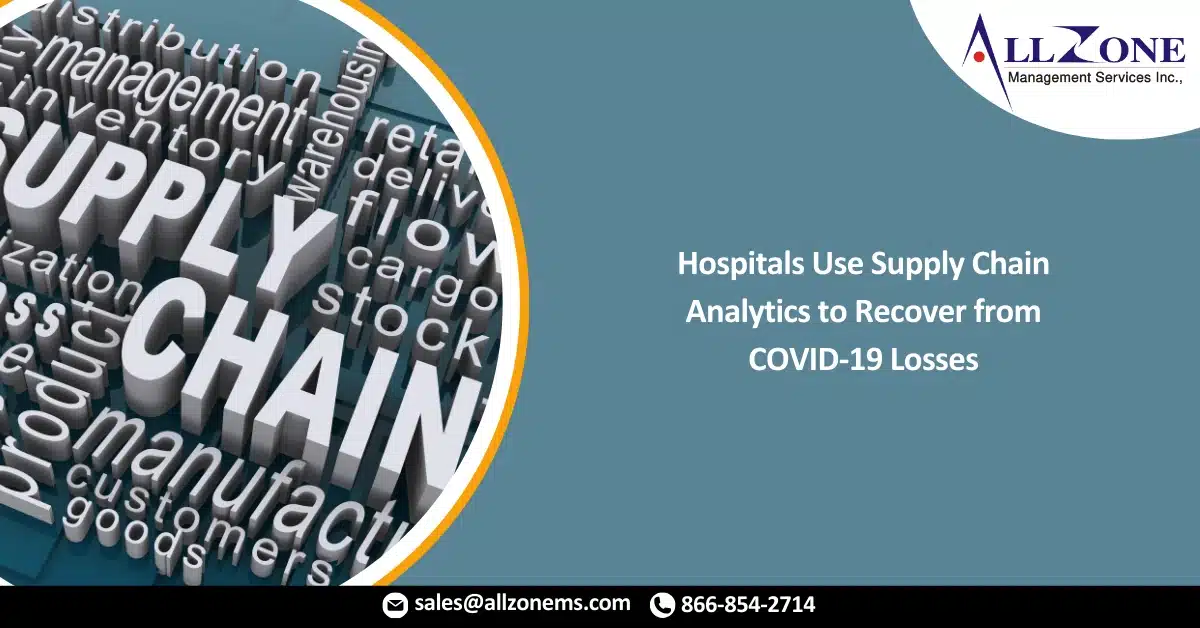The COVID-19 pandemic has challenged healthcare networks throughout the U.S. in unprecedented ways. As financial losses are being surveyed, new opportunities have emerged for hospitals and health systems to not only recover from those losses, but also simultaneously establish cost-saving initiatives in the perioperative area by using optimized supply chain analytics.
Healthcare organizations are also recognizing the benefits of engaging incident surge services and solutions to help their supply chains move forward from COVID -19. These services include:
- Conducting inventory health checks to optimize inventory in all departments
- Restoring and optimizing their Item Master
- Automating manual, time-consuming tasks
- Streamlining decedent management and tracking processes
- Incorporating supply demand forecasting and additional real-time data analytics
The numbers make the benefits of supply chain analytics clear: A hospital with $800 million in revenue that improves its SCM performance by 1% to 3% could gain between $8 million and $24 million.
To turn wounds into wisdom, the time is now for hospitals to improve their supply chain analytics and grow from the pandemic’s strain, says Todd Plesko, CEO of Syft, a supply chain management solutions provider which recently released a playbook for hospitals to help them recover from COVID-19 and fortify for future disruptions.
“Optimizing your hospital’s supply chain has never been more important than it is today, and it will grow even more critical as winter approaches and hospitals face potential additional surges of COVID-19 and seasonal influenza patients,” says Plesko. “Hospitals that can make quick improvements now will enhance patient and staff safety, while also identifying opportunities to reduce waste and improve overall margins.”
Knocked Down
According to the American Hospital Association, hospital financial losses will deepen by an additional $120.5 billion from July 2020 through December 2020, bringing total losses to at least $323.1 billion for the year. Experts have warned that the recovery pace for hospitals and health systems will be slow, and that normal hospital volume will not come back quickly, even as states lift moratoriums on non-emergent procedures.
To confront this challenge, hospitals will need to find ways to make the most of every procedure they do perform.
Enter an optimized supply chain, substantially reducing waste in the perioperative area and significantly improving margins.
Rise Up Stronger
The operating room in particular accounts for many hospitals’ highest supply costs, particularly due to the cost of physician preference items (PPI), says Brion Bailey, Syft’s Chief Commercial Officer.
“This is why hospitals must be able to employ analytics that automatically, systematically, and continually identify PPI savings opportunities,” he says. “For example, they should regularly provide physicians with reports that connect cost-variance analyses with patient outcome and length-of-stay metrics. Data can be used as evidence to prove that lower cost items do not negatively impact patient outcomes, which makes it easier to gain physician buy-in on those lower-cost items.”
Hospitals can also use supply chain analytics to identify the surgical procedures that are their highest revenue drivers, says Plesko. These procedures are best identified with point-of-use (POU) tools that have scanning and charge capture capabilities seamlessly integrated into their supply chain analytics platform.
“When hospitals give their staff POU tools that automate traditionally manually processes, it saves them a significant amount of time, improves productivity, and ensures supplies being used during procedures are captured and accurately recorded in clinical systems which increases OR revenue,” says Plesko. “It’s a small change to workflows that is easy to incorporate and makes a significant impact.”
Despite the benefits of point-of-use supply chain management solutions, less than half of hospitals use them, according to a February 2020 survey of 100 hospital and supply chain leaders. In addition, 80% of hospital and supply chain leaders say OR physicians can’t easily track or compare cost-per-case and outcomes with peers, and 49% say case cost variations aren’t discussed with individual surgeons.
Point blank: Hospital leaders need more viable data. Today, most rely on data at the point of purchase. To achieve total supply chain visibility, they also need data at the point of use.
To that end, an updated item master, supplied with high-fidelity data, is crucial, especially as hospitals adapt to changes that have come about during COVID-19, says Bailey. Since the pandemic began, many hospitals have acquired supplies from non-traditional suppliers that are not part of their GPO contract, he explains. These items may or may not have been updated in their item master. By incorporating barcodes with these items, staff members can use POU scanners in the OR and allow the system to flag any item that is not on-contract (including bill-only). “Staff members then have the option to quickly substitute for a contracted item, which will ensure that they are using items the hospital has negotiated for, thereby saving money,” says Bailey.
An Opportunity Seized
Hospitals across the country are increasingly recognizing the value of an optimized supply chain. Rady Children’s hospital, for example, a leading San Diego pediatric medical center, recently leveraged the Syft Synergy platform to increase their supply chain efficiency.
“One of our biggest strategic goals is to increase our cost-based decision-making for Surgical Services inventory, while continuing to ensure the highest quality patient outcomes,” said Dave Graul, Director of Supply Chain Management at Rady Children’s. “It’s the next step in our multi-year strategic supply chain optimization project.”
COVID-19 has forced many hospitals to scrutinize the way their supply chains are managed. They recognize this as a moment to go beyond recovering financial losses and use lessons learned from this challenge to build a fortified, more resilient system.
Optimize the supply chain, increase margins. Syft Synergy is a supply chain management platform that leverages artificial intelligence (AI) and machine learning to help hospitals forecast supply demand, realize cost savings through supply standardization, optimize inventory across all departments including the point of use, and accurately capture supply utilization which boosts the hospital’s bottom line.
For More Information: https://www.fiercehealthcare.com/sponsored/syft-harnessing-perioperative-supply-chain-analytics-to-recover-from-covid-19-financial

